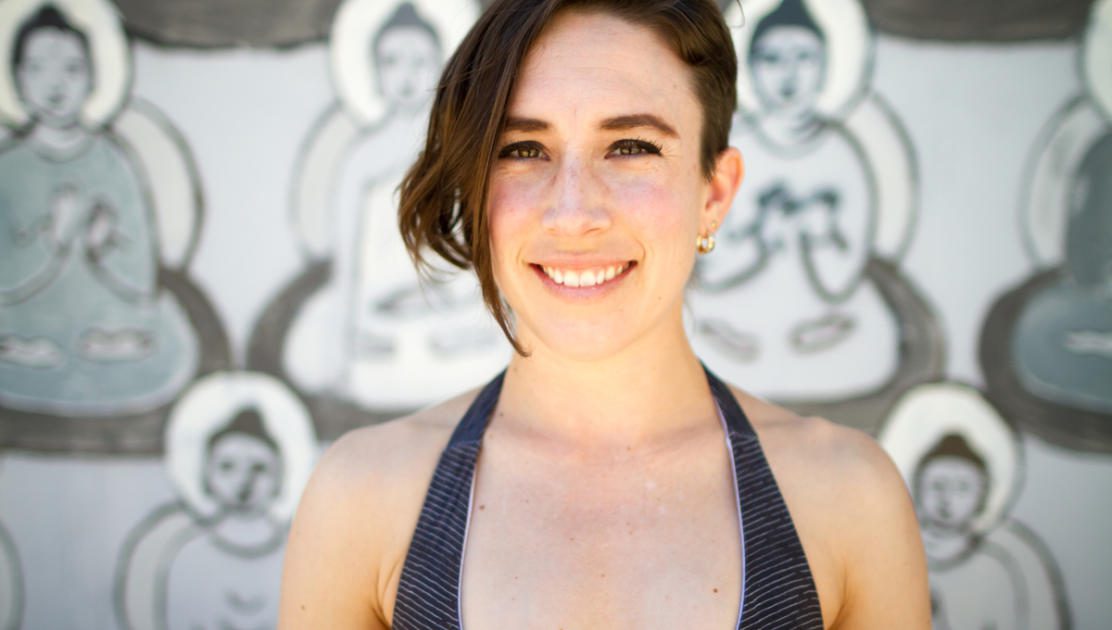The Body Speaks, and Its Language is Movement
“Social Presenting Theater” and how a social art form helps us understand ourselves
by Nichol Chase, Garrison Institute Fellow
If you are a movement enthusiast (and even if you aren’t), you must check out Arawana Hayashi’s new book Social Presencing Theater: The Art of Making a True Move. I first came across Arawana Hayashi’s work with Social Presencing Theater eight months ago as I was beginning to develop my project for the Garrison Fellowship.
Although I was relatively new to Hayashi’s work, it felt familiar, like I’d been working with her for decades. In a way, she’s given me language I’ve been searching for most of my life. She offered spoken language and the language of the body that expresses the potential I always sensed for movement practices.
The body speaks, and its language is movement. I’m familiar with the language of movement through years of Royal Academy dance training and my practice and teaching of yoga asana. As a movement teacher, I know how difficult it is to teach others to observe and communicate through the nonverbal vocabulary of the body, which is why I am so taken with Social Presencing Theater. Hayashi clearly articulates how the building blocks of this language–movement and shapes–can be utilized to tap into the body’s innate intelligence and what it is trying to communicate.
Social Presencing Theater is an individual and group practice rooted in embodiment, meditation, and systems thinking. It was developed for the purpose of sensing into the systems we are embedded within to gain insight and wisdom, to close the feedback loop between reality and its invisible source of awareness and thought. This invisible source of thought and awareness can only be accessed and understood in the present moment. Because the body’s wisdom can only be felt in the present moment, movement practices are ideal tools for understanding the complex relationships between heart, mind, body, and the external world.
Arawana Hayashi has developed nine practices for using embodied practice as a way to sense into larger systems, seven of these practices are described in her book. The practices range from individual practices (20-minute Dance) to relational practices (Duets) and group practices (Stuck, 4-D Mapping, Dance of Fives, Field Dance, The Village). Her approach allows for holistic, multifaceted, and intimate awareness of our individual, relational, and global systems.
The ultimate aim is to use embodied practice as a heuristic for seeing and sensing ourselves, individually and communally, in real time. In doing so, we may shift collective consciousness, develop the capacity to sense and shape emerging future possibilities, and sense and act from our highest potential.
Embodied practices are essential for navigating this VUCA (volatile, uncertain, complex, ambiguous) world. They very well may be the missing link for individual, relational, collective, and global transformation. In Hayashi’s words,
“The everyday activity of creating society is a vast co-creation process in which there are no passive audience members. We are all creators and performers……Artfulness is seeing the uniqueness in our everyday experience. We appreciate our ordinary daily activities……The everyday gestures and movements that arise from this place of appreciation and nonaggression are TRUE MOVES. In this way, living is the creation of social art……We cannot simply think our way out of the challenges we have on the planet today. We need all of our intelligences, including the sensing-body intelligence.”
Visit arawanahayashi.com for more information about Arawana Hayashi.
Garrison Institute Fellow Nichol Chase is a teacher, musician, and yogi for whom singing and movement is integral to life. For more information on Nichol’s work, please visit her website.
